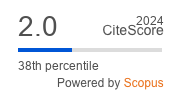Possibilities of family medicine in medical education
Keywords:
Education/graduate, Family medicine, CurriculumAbstract
Family medicine is a discipline that has only recently joined the academicarena. Because of this, the academic contribution of this disciplineto universities has not been clarified yet. On the other hand,the medical schools suffer from well-known challenges, that havebeen largely known in the discussions about the crisis of academicmedicine. The article explores the possibilities of mutual cooperationbetween family medicine and the universities. In order to profit fromthe qualities of academic medicine and family medicine, a partnershipbetween the two needs to be established. It should be built on acceptanceof differences and adaptation of family medicine to the rules ofthe academia, which should be done without sacrificing its principles.The author describes three potential scenarios how family medicinecan be introduced in the undergraduate curriculum: a) as a subject atthe end of the curriculum, b) as collaboration in early patient contactand teaching clinical skills and c) as part of the integrated curriculum.The author concludes that both family medicine and the medicalschool have a lot to benefit from mutual cooparation. This requirescompromises that are not always easy.References
Marušić A, editor. Revitalization of academic medicine. Zagreb: Medicinska naklada; 2005.
Clark J. For the International Campaign to Revitalise Academic Medicine. Five futures for academic medicine: the ICRAM scenarios. BMJ. 2005;331(7508):101-4.
Sewankambo N. Academic medicine and global health responsibilities. BMJ. 2004;329(7469):752-3.
McManus IC. How will medical education change? Lancet. 1991;337:1519-21.
Švab I. Changing research culture. Ann Fam Med. 2004;2(Suppl 2):S30-S4.
Švab I. Take home message from the president of Wonca Europe. PrimaryCare 2010;10(1):13.
Evans PR. Medicine in Europe: The changing scene in general practice in Europe. BMJ. 1994;308(6929):645-8.
Scherger JE. A medical student's perspective on preceptors in family practice. J Fam Pract. 1975;2(3):201-3.
Morris CG, Chen FM. Training residents in community health centers: facilitators and barriers. Ann Fam Med. 2009;7(6):488-94.
Gordon J. ABC of learning and teaching in medicine: One to one teaching and feedback. BMJ. 2003;326(7388):543-5.
Jaques D. ABC of learning and teaching in medicine: Teaching small groups. BMJ. 2003;326(7387):492-4.
Walsh JM, Papadakis M. Prevention training and medical residency. Am J Prev Med. 1994;10:168-71.
Kochen MM, Himmel W. Academic careers in general practice:scientific requirements in Europe. Eur J Gen Pract. 2000;6(2):62-5.
Grover M. Teaching general rules during ambulatory education. Fam Med. 2003;35(3):160-2.
Heyrman J, ed. EURACT Educational agenda of general practice/family medicine. Leuven: EURACT; 2005.
Green LA. The research domain of family medicine. Ann Fam Med. 2004;2(Suppl 2):S23-S9.
Švab I. The medical speciality of family medicine:the European perspective. PrimaryCare. 2010;10(4):59-60.
Švab I, Bulc M. Academic medicine: What does an outsider have to offer? Croat Med J. 2004;45(3):254-5.
Švab I, Petek Šter M. Long-term evaluation of undergraduate family medicine curriculum in Slovenia. Srp Arh Celok Lek. 2008;136(5-6):274-9.
Dornan T, Bundy C. What can experience add to early medical education? Consensus survey. BMJ. 2004;329(7470):834-7.
Snellen-Balendong H. Rationale underlying the design of a problem-basedcurriculum. In: Bouhuijs PAJ, Schmidt HG, van Berkel HJM, editors. Problem-based learning as an educational
strategy. Maastricht: Network publications; 1993. p. 69-78.
Švab I, Ribarič S, Plemenitaš A, Kopač I, Pirtošek Z. Sodobno medicinsko izobraževanje (Modern medical education). Zdrav Vestn. 2004;73(3):109-11.
Lowry S. Curriculum design. BMJ. 1992;305:1409-11.
Švab I. The challenged values of family medicine. In: Rumboldt M, Petric D, editors. Proceedings of the XVI kongres obiteljske medicine. Split: HUOM; 2009. p. 7-3.
UEMO consensus document on specific training for general practice. In: Kennedy TE, editor. UEMO reference book 2000/2001. UEMO. p. 30-5.
Criteria for general practitioner trainers. In: Kennedy TE, editor. UEMO reference book 2000/2001. UEMO. p. 22-3.
Abbasi K. Let's dump impact factors. BMJ. 2004;329(7471):0-h.
Gibson JC. Impact factor in general practice. Qual Prim Care. 2011;19(1):3-4.
Beasley JW, Hankey TH, Erickson R, Stange KC, Mundt M, Elliott M, et al. How many problems do family physicians manage at each encounter? A WReN study. Ann Fam Med. 2004;2(5):405-10.
Švab I. Academic family medicine - the jewel in the crown or the useless aristocrate? Rev Port Clin Geral. 2007;23:6-8.





